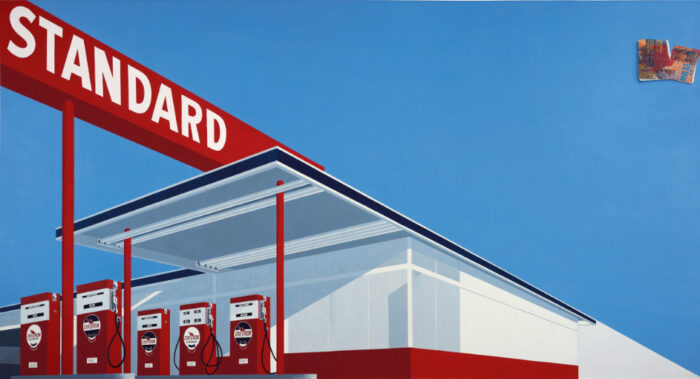
In the tumultuous era of the 1960s, amidst cultural upheaval and artistic experimentation, an American artist, Ed Ruscha, wielded his brush as a provocative commentator on the urban landscape. His iconic work, “Los Angeles County Museum of Art on Fire,” encapsulated the fiery spirit of the times, capturing the surreal fusion of cultural symbols and graphic intensity. Now, nearly six decades later, this seminal piece debuted at the institution it once depicted, heralding the arrival of “ED RUSCHA / NOW THEN,” a comprehensive retrospective spanning over sixty years of Ruscha’s prolific career.
Curated by Rebecca Morse of LACMA’s Wallis Annenberg Photography Department, the exhibition offers a profound exploration of Ruscha’s multifaceted oeuvre. With over 250 works on display, ranging from paintings and drawings to prints, photographs, and artist books, viewers are invited to immerse themselves in Ruscha’s remarkable cross-media practice. The retrospective, a result of a decade-long collaboration between MoMA and LACMA, showcases Ruscha’s evolution as an artist while underscoring his enduring connection to Los Angeles.
Ruscha’s relationship with LACMA runs deep, dating back to 1963 when the institution acquired “Actual Size,” marking the beginning of a long-standing partnership. Ruscha’s artistic journey intertwines with the city’s fabric from his early manipulation of graphic design in works like “Twentysix Gasoline Stations” to his systematic documentation of Los Angeles storefronts. As Morse notes, his use of photography to translate dimensional reality into flat images laid the groundwork for his iconic compositions.
Central to the retrospective is Ruscha’s revolutionary approach to text and image. Far from being confined to a singular artistic label, Ruscha’s work defies categorization, embodying elements of Pop art, Minimalism, and Conceptualism. Instead, the exhibition highlights his relentless exploration of typography, signage, and the interplay between word and image. From the sonic resonance of words like “OOF” to the poetic resonance of everyday phrases, Ruscha’s art captures the essence of contemporary dialogue.
As viewers traverse the exhibition, they are invited into a dialogue between present and past, now and then. Each artwork becomes a node in a vast conversation, echoing Ruscha’s enduring fascination with the mundane and monumental. Through his lens, parking lots and gas stations transform into sites of poetic resonance, while onomatopoeic exclamations reverberate with cultural significance.
Ultimately, “ED RUSCHA / NOW THEN” serves as a testament to Ruscha’s enduring legacy and his profound impact on the artistic landscape of Los Angeles. As Morse eagerly anticipates audience responses, it becomes clear that Ruscha’s art transcends mere representation, inviting viewers into a dynamic exchange that bridges past and present, imagination and reality.








